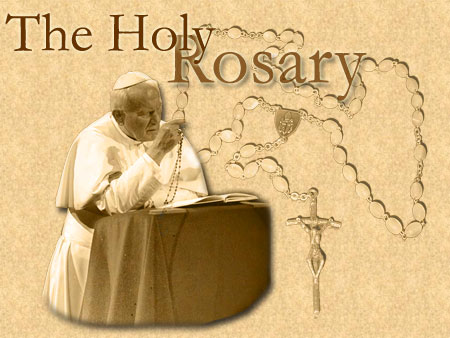Saturday, January 26, 2008
Summons to the Center
If the charade – this ancient charade, marked similarly in a hundred centuries in a thousand cultures – if it means anything at all, it means that this man and this woman are stepping up into a great mystery, much greater and more splendid than either of them has any notion of at this point; and that they enter together, with heads bowed in obedience to the rubric, to find out just what it is all about and how it happens that freedom and wholeness for both of them lie, oddly enough, along a way already well trodden and well marked with the rules of the road. This woman, all decked in demure white: Is she not for the moment all women? This ceremonial array: Does it not bespeak something that is close to the center of things, but that we cannot, in the hurly-burly of ordinary daily life, with its shopping bags and laundry and diapers, always quite catch? We need this highly conscious, highly structured, ritual enactment of what is always there – that a woman is a noble creature, bearing as she does the image of God, and that at her approach to her lord, the other one who bears the image of God, it is well that the mystery of her being and of her approach be veiled and clothed in white. We need this to bring home to us what is at stake here. Ceremonies matter. Ancient ceremonies matter. (They weren’t dreamed up yesterday over a Coke or pasted together in a sharing session.) They come from the sources of human imagination responding to the biggest mysteries there are...
And all these friends here: What are we doing, all standing about? Are we not signaling to the bride and groom, and to all who wish to know, and to the hosts of heaven, that this is no private transaction? It is preeminently public, that is, human. Here we announce our solidarity one with another, all of us. We wait upon this man and this woman as they step into this most private, most public, act. We stand about them, bringing in our bodies the whole human race to the spectacle. The ceremony needs us too.
Hence these bridesmaids ... Now they come, themselves decked in fine raiment, stepping punctiliously down the long aisle, not capering, not calling to one another or to the bride, not waving greeting to friends in the congregation. Why all this solemnity?... Because. Because. There is something else going on now. This ritual carries us through the clutter and random tumble to the awareness that in the "ordinary" business of boys and girls, or of men and women, we are close to the central mystery of Creation (male and female created he them), and that this is a mystery worth pausing over and marking on such an occasion. Pinches and claps on the back are fine, but you pause when you look into the shrine. You stop frolicking momentarily. These young women now bear a heavy and glorious ceremonial weight upon them. They are not particularly Jane and Meg and Kate now; they are Jane and Meg and Kate appearing as attendant womanhood, assisting at the holy mysteries.
Much more, well worth reading, here.
Sunday, January 20, 2008
Tea Cosy of Champions
 Therese knitted me an official Mrs. Doyle tea cosy as a Christmas present, featured here in an early St Agnes' day tea with Agnesenplatzchen.
Therese knitted me an official Mrs. Doyle tea cosy as a Christmas present, featured here in an early St Agnes' day tea with Agnesenplatzchen.
Thursday, January 17, 2008
A fellow Church Lady
 In doing a little spiritual preparation for my August wedding, I encountered the following quote from St Gianna.
In doing a little spiritual preparation for my August wedding, I encountered the following quote from St Gianna."The months leading up to [St Gianna's] wedding on September 24, 1955, passed very quickly. Everything they needed was purchased for the apartment where the newlyweds would live; the most beautiful and costly material was purchased for the bridal gown, with the remark, 'If a son of mine becomes a priest, I would like to make vestments for him out of my bridal gown.'"
[Holbock, Married Saints and Blesseds]
What a beautiful idea! The symbolism of one's wedding dress being used at the Mass is just lovely.
Sunday, January 6, 2008
From Rosarium Virginis Mariae

If it's not too late, rescue any 2007 calendars with religious themes and make the pictures into Rosary books for your children or godchildren. I've done this in the past by simply using a three-ring binder and plastic sheet protectors. Back each picture with a sheet of solid paper to hide the distracting calendar back and divide them according to the Mysteries. Catholic magazines and the internet can also be sources for suitable pictures. It's a great help for little ones, to better focus and understand the prayers.
29. Announcing each mystery, and perhaps even using a suitable icon to portray it, is as it were to open up a scenario on which to focus our attention. The words direct the imagination and the mind towards a particular episode or moment in the life of Christ. In the Church's traditional spirituality, the veneration of icons and the many devotions appealing to the senses, as well as the method of prayer proposed by Saint Ignatius of Loyola in the Spiritual Exercises, make use of visual and imaginative elements (the compositio loci), judged to be of great help in concentrating the mind on the particular mystery. This is a methodology, moreover, which corresponds to the inner logic of the Incarnation: in Jesus, God wanted to take on human features. It is through his bodily reality that we are led into contact with the mystery of his divinity.
(Image Source)Friday, January 4, 2008
A Church Lady Christmas

(Shown above are three of the four racks made.)
